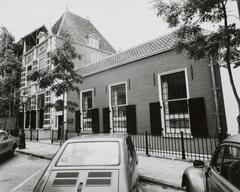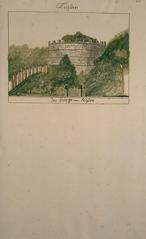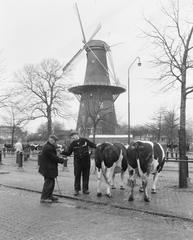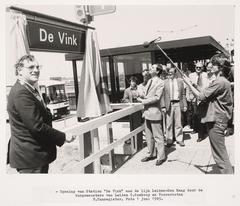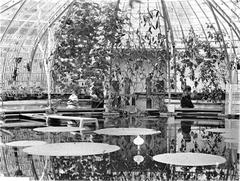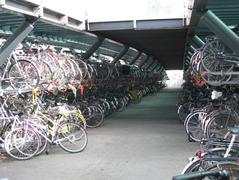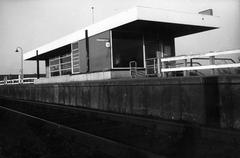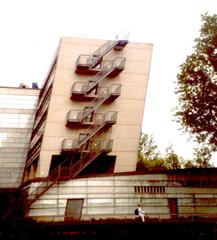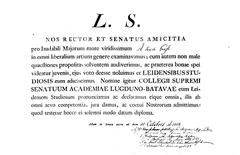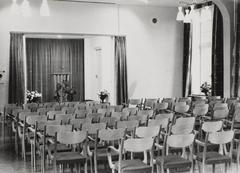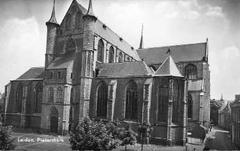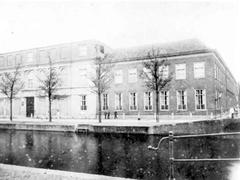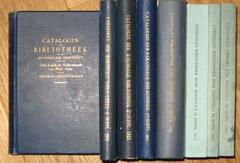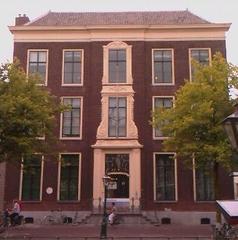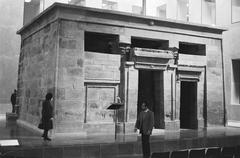Matilo Visiting Hours, Tickets, and Historical Sites in Leiden, Netherlands
Date: 14/06/2025
Introduction
Located in Leiden, Netherlands, Matilo stands as a testament to the Roman Empire’s northern frontier along the Lower Germanic Limes, now recognized as a UNESCO World Heritage Site. Established around 47 AD, this Roman fort served as a military and logistical hub, controlling waterways such as the Oude Rijn and the Kanaal van Corbulo. Today, Matilo’s legacy is preserved in Archaeological Park Matilo—an open-air museum offering visitors a chance to explore reconstructed ramparts, thematic gardens, interpretive sculptures, and engaging events. Whether you are a history buff, family traveler, or cultural explorer, Matilo offers a rich, educational experience in a welcoming, accessible environment.
Visitors can explore the park free of charge year-round, with well-maintained paths suitable for wheelchairs and strollers. Guided tours, digital apps, and interactive installations further bring the story of Roman and local populations to life. Matilo’s strong connections with Leiden’s Museum De Lakenhal and the Rijksmuseum van Oudheden, which displays many artifacts from the site, add further depth to any visit. The park is also integrated into regional cycling and walking routes, making it an ideal destination for combining outdoor activity with historical discovery.
For up-to-date visitor information, including opening hours, accessibility, events, and guided tours, consult the official Park Matilo website, Ancient World Magazine, and Romeinen.nl.
Table of Contents
- Introduction: Discovering Matilo’s Roman Origins and Significance
- Etymology and Pre-Roman Context
- Development and Structure of the Fort
- Role within the Lower Germanic Limes
- Archaeological Discoveries and Preservation
- Matilo Through the Ages
- Park Matilo: Visitor Information
- Getting There and Nearby Attractions
- Visuals and Media
- FAQs
- Conclusion: Matilo and Leiden’s Roman Heritage
- References
Matilo’s Roman Legacy: History and Significance
Matilo, known as Matilone in antiquity, was established during Emperor Claudius’s reign as a key Roman castellum (fort) on the empire’s northern frontier. Its location at the confluence of the Oude Rijn and the Fossa Corbulonis canal allowed the Romans to control river traffic and defend against Germanic tribes. The fort worked in concert with nearby sites such as Albaniana and Praetorium Agrippinae, forming a crucial part of the Lower Germanic Limes.
Etymology and Pre-Roman Context
The name “Matilo” likely derives from a local water body, following Roman tradition, with roots in Celtic or Germanic languages. Archaeological findings indicate sparse pre-Roman settlement here, with communities typically located away from the riverbanks.
Development and Fort Structure
Matilo began as a timber and earthwork structure but evolved into a stone fortification, featuring barracks, storage, defensive walls, and watchtowers. Its garrison monitored waterways and maintained order, supported by efficient supply lines via the adjacent canal.
Integration into the Lower Germanic Limes
Matilo was part of a chain of forts along the 400-kilometer Lower Germanic Limes, facilitating defense, administration, and cultural exchange between Romans and local populations. This frontier system is now a UNESCO World Heritage Site.
Archaeological Discoveries and Preservation
Excavations at Matilo have revealed weapons, coins, ceramics, and personal items, shedding light on Roman frontier life. The site documents multiple construction phases and adaptations. Since 1976, Matilo has been protected as a national monument (rijksmonument), with ongoing efforts ensuring its preservation and public accessibility (Atlas Obscura).
Matilo in Medieval and Modern Times
Following the Roman withdrawal in the 5th century, Matilo was abandoned, though its name persisted on medieval maps. Today, the site is preserved beneath modern Leiden as Archaeological Park Matilo, dedicated to interpreting Roman history for the public.
Park Matilo: Visitor Information and Public Engagement
Visiting Hours and Admission
- Opening Hours: Park Matilo is open daily from dawn until dusk. Some resources state 24/7 access, but visitors are encouraged to check the official website for current times.
- Admission: Entrance to the park is free.
- Guided Tours: Offered on weekends and by appointment, often through the Limes Visitor Center FABRICA. Check online for schedules and booking.
- Events: Regular workshops, reenactments, and festivals (e.g., Buurtcamping) enhance the educational and community atmosphere (debuurtcamping.nl).
Accessibility and On-Site Facilities
- The park’s paths are generally flat and accessible to wheelchairs and strollers, though some rampart and tower areas may have uneven terrain.
- Benches, shaded areas, and bilingual informational panels (Dutch and English) are available throughout.
- Public toilets are provided during events; there are no permanent cafés, so bring refreshments.
Getting There
- By Public Transport: Matilo is a 30-minute walk or short bus ride from Leiden Lammenschans train station.
- By Bicycle: The park is integrated into the Limes Matilo cycle route (fietsnetwerk.nl).
- Parking: Available in nearby residential areas but may be limited during events.
COVID-19 Guidelines
For the latest health and safety measures, consult the official Park Matilo website.
Experiencing Matilo: What to See and Do
Roman Heritage and Reconstructions
Visitors can walk the reconstructed outline of the Roman fort, marked by earthen ramparts and six replica watchtowers. The Limesweg path runs through the park, tracing the ancient frontier, while iron sheet pile walls evoke the Fossa Corbulonis canal. Thematic gardens—including a Roman herb garden, medieval cloister garden, and food forest—reflect centuries of history.
Interpretive Sculptures and Installations
Open-air sculptures represent aspects of Roman and local life, such as the army standard, catapult, cavalry horse, surveyor (groma), and the sower. These installations show the interplay between Roman order and indigenous traditions.
Events and Educational Activities
- Guided Tours: Led by experts or volunteers, especially on Sundays via the Limes Visitor Center FABRICA.
- Workshops and Reenactments: Activities for families, schools, and history enthusiasts, including Roman archery demonstrations and historical games (komoot.com).
- Community Festivals: The Buurtcamping festival transforms the park into a lively, participatory space each summer.
Digital and Interactive Resources
- TimeTravel App: Offers augmented reality and 3D reconstructions.
- Online Museum Matilo: Provides virtual tours and detailed archaeological insights for remote visitors.
Linked Museums
Artifacts from Matilo are displayed at the Rijksmuseum van Oudheden in Leiden. Combining a park visit with the museum enriches your understanding of Roman history in the region.
Practical Tips for Visiting Matilo
- Best Time to Visit: Spring and summer for gardens in bloom and more frequent events.
- Family-Friendly: Playgrounds, interactive art, and open spaces make it ideal for children.
- Facilities: Bring your own refreshments; public toilets are available during events.
- Weather: Dress for the variable Dutch climate.
- Photography: Personal photography is welcome; professional shoots require permission.
- Language: Bilingual signage; staff often speak English.
- Safety: The park is safe, but be mindful of belongings during busy events.
Frequently Asked Questions (FAQ)
Q: What are the visiting hours?
A: The park is open daily from dawn until dusk, with some resources stating 24/7 access. Check the official website for details.
Q: Is there an entrance fee?
A: No, entry is free.
Q: Are guided tours available?
A: Yes, especially on Sundays and through prior booking.
Q: Is the park wheelchair accessible?
A: Most paths are accessible, though some features may be less so.
Q: Are dogs allowed?
A: Dogs should be kept on a leash; check official guidelines.
Q: Are there restroom facilities?
A: Public toilets are available during events.
Q: Can I cycle in the park?
A: Yes, on designated paths. The park is part of the regional cycling network.
Planning Your Visit: Nearby Attractions and Routes
Combine your visit with other Leiden highlights:
- Rijksmuseum van Oudheden (National Museum of Antiquities): Roman, Egyptian, and Dutch archaeology.
- De Valk Windmill Museum: Iconic Dutch windmill museum.
- Hortus Botanicus Leiden: Historic botanical gardens.
- Leiden Tourism Guide: Additional walking and cycling routes, city events, and tips.
Sustainability and Community Involvement
Matilo is a model for sustainable urban landscaping and community engagement. Local residents help maintain the gardens and organize events, making the site vibrant and welcoming (debuurtcamping.nl).
Summary
Matilo offers a unique journey through Leiden’s Roman past, blending archaeological preservation with public engagement. The park’s free access, year-round availability, thematic gardens, reconstructed features, and interactive art installations make it a must-visit for anyone interested in Roman history, archaeology, or Dutch heritage. Supplementary facilities, such as guided tours and the Limes Visitor Center FABRICA, and connections to major museums enrich the experience. Whether exploring on foot, cycling the Limes route, or enjoying community events, Matilo is a dynamic and educational destination.
For the latest updates, visit the official Park Matilo website, download the Audiala app for guided audio tours, and follow social media channels for news and events.
References
- Park Matilo - Het Verhaal van Matilo
- Ancient World Magazine - Archaeological Park Matilo
- Archaeology Travel - Roman World in the Netherlands
- Visit Leiden
- Romeinen.nl - Roman History in the Netherlands
- Rijksmuseum van Oudheden (National Museum of Antiquities)
- Atlas Obscura - Matilo
- Fietsnetwerk - Limes Matilo Cycle Route
- Komoot - Matilo Highlight
- De Buurtcamping - Park Matilo
- Dagjeweg - Archeologiepark Matilo
- Solosophie - Leiden Guide
- Travellifebalance - Hidden Gems of Leiden
